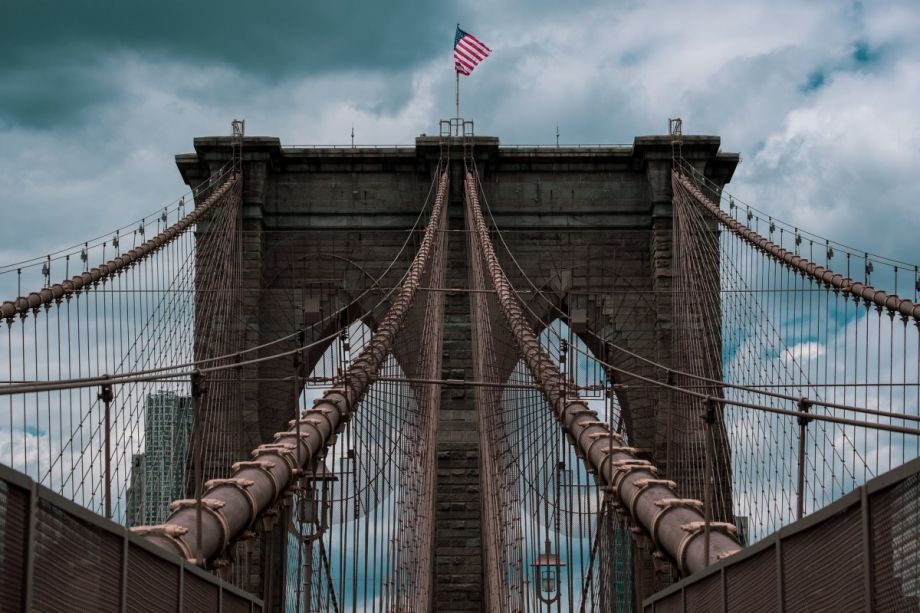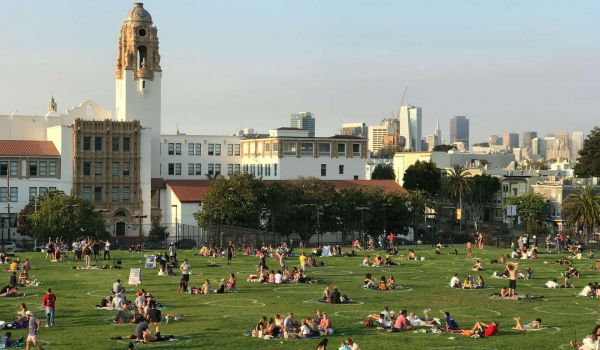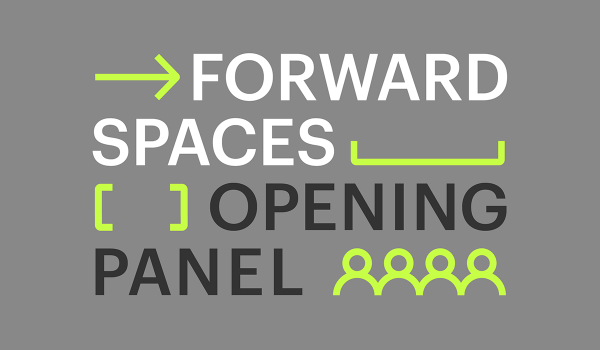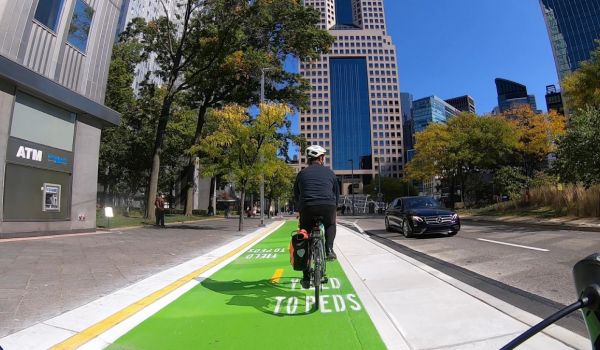America’s infrastructure is in dire need of significant investment — the American Society of Civil Engineers has infamously given the United States a cumulative D+ on its Infrastructure Report Card, with a D+ for energy infrastructure in particular. Our electrical grid alone is estimated to need $2 trillion in investments over the next 30 years.
However, as conversations continue about the need for a Green New Deal and overdue upgrades to the nation’s infrastructure, we also have a once-in-a-generation opportunity to reimagine the role that infrastructure can serve in cities. Infrastructure should be conceived as a community asset, both providing equitable new public space and contributing to the beauty of cities, at a time where pressure on urban land is at a premium and civic pride often waning.
This is not a novel concept. The Victorian Era transformed London — and all of Great Britain — with roads, railways, bridges, embankments, sanitation infrastructure and more, much of which remains among the city’s most beloved landmarks and public spaces. Similarly, Jean-Charles Adolphe Alphand, a chief engineer and director of public works in Paris during the mid-19th century, brought beauty to the water and sewer systems of the city.
The United States saw a similar push in the 1930s and 40s with the Works Progress Administration (WPA), which, in addition to Art Deco civic buildings across the country, built iconic infrastructural projects like the Hoover Dam, Blue Ridge Parkway, San Antonio River Walk and dozens of national parks and monuments, projects that were both functional and beautiful, that created new opportunities to make wonderful and unexpected public places. For the WPA, infrastructure encompassed much more than bridges and roads — it included theaters, stadiums, parks and other examples of civic architecture — and this broad definition inspired people to design infrastructure that is integral to its surroundings.
Today we have the opportunity to take these examples even further, by reimagining America’s tens of thousands of decaying urban infrastructure assets — our dams, reservoirs, water tanks, power stations, rail yards, sewage works, electricity pylons, pumping stations and more — to create infrastructure that is both functional and beautiful. Of course we must build sustainable infrastructure, powered by renewable sources, that will conserve energy and reduce carbon and, in so doing, create better places for people — and reduce lifecycle costs. But even beyond that, we can redesign these assets in such a way that more seamlessly integrates them into the urban fabric, supporting a more varied public realm and community development. Here’s how.
Celebrate the Utilitarian
There is often an attitude that if we make infrastructure a “dumb box” no one will notice it, but in cities in particular, infrastructure is often unavoidable and visible from many different viewpoints. The best infrastructure doesn’t pretend it’s invisible, but celebrates its contribution to the community, around-the-clock and around-the-seasons.
We’re already starting to see contemporary visions that embrace infrastructure as a civic and community asset. In Copenhagen, the whimsical power plant Amager Bakke is topped by an artificial ski slope, hiking trail and climbing wall. Medellín’s public space program known as Unidades de Vida Articulada (UVA), or Articulated Life Units, has created public parks and community centers around repurposed water tanks.
And in the United States, my firm NBBJ designed the recently opened Denny Substation — Seattle’s first new electrical substation in 30 years — as a piece of infrastructure that’s also an active public amenity. In addition to housing electrical equipment for Seattle’s grid, it has a public park, walking path, two community centers and a public art program delivered in partnership with the city’s Department for Arts and Culture through its 1% for Art Fund.
Balance Safety and Security with Public Access
The extent to which infrastructure can be celebrated depends on what it is, because some places — like electrical stations — can’t be open to the public for safety or security reasons. But there’s no reason why infrastructure can’t be architecturally interesting — or integrated into an earthen mound to become part of the landscape. Levees and floodwalls are the classic example — in Staten Island, a 5.3-mile sea wall in development will double as a barrier against storms and sea level rise and serve as a new public promenade and bike pathway . But an even more extreme example is furnished by Anaheim Public Utilities, which completely buried an electrical substation beneath a 2-acre community park.
Create Productive Tension
Architecture at its heart is a social experiment, and cities are our laboratories. If we’re creative and break boundaries in a thoughtful way, we can create unusual, interesting tensions to redefine the urban experience. When, for instance, a bridge or viaduct is seen only as part of a functional problem to be solved — indeed, a problem that can practically be solved by ordering from a catalogue — we are missing an incredible opportunity for civic expression. Happily it is increasingly recognized that a bridge is both a place in its own right, and infrastructure that connects places. In Dallas, a public-private partnership comprised of the Texas Department of Transportation, the City of Dallas, and The Woodall Rodgers Park Foundation led the development of Klyde Warren Park, a 5.2-acre parkspace hovering alongside a freeway overpass that includes multiple performance stages.
Why shouldn’t an infrastructure project also have community space, art projects, a dog park and be net zero? Until the Denny Substation was completed it hadn’t been done before, and now we can learn from that project and apply similar thinking elsewhere.
Getting Creative with Your Budget
The client for an infrastructure project is often a public utility, which has limited resources for capital projects, and for political reasons what they do spend can’t be viewed as frivolous. However, infrastructure can be beautiful without costing a lot of money, especially if it can incorporate things that are a part of daily life, like seating, murals, or interesting, solar-powered lighting.
This may require designers to be creative with project concepts and materials, the latter of which must be both durable and cost-effective. It may also require creative financing by accessing the budgets of multiple agencies — for instance, both the public utility and the parks department — or by forging innovative new public-private partnerships.
At London’s Queen Elizabeth Olympic Park, infrastructure across the over 500-acre site was transformed into public art by leveraging funding from a mix of government, arts sector, and private support sources including the Greater London Authority, Arts Council England, and the London Development Agency.
Small substations are encased by a wood slat structure that has poetry and simple drawings carved into it that reference the industrial heritage of the Olympic Park site. Artist Martin Richman used recycled materials to transform a pedestrian underpass and a bridge onsite into swirling artworks to activate what could have been unmemorable project elements. And a security fence atop an infrastructure building covered in grass converts the five Olympic rings into an image of a low-frequency oscillation sound wave. The wave, designed by Carsten Nicolai, was digitally printed onto the fence, with five cycles of intensity that seem to pulse across the artwork.
Engage the Community
Finally, because infrastructure serves the community — and because we want any additional benefits to be enthusiastically adopted by the public — the community needs to have a voice in challenging norms and defining new ways of designing infrastructure. Many urban designers and planners are already adept at public engagement, so the more these experts can be enlisted in creating boundary-pushing infrastructural projects and the more they can double down in their commitment to thoughtful and comprehensive community consultation, the better.
As architects and designers, we are trained in the Vitruvian elements of architecture: “commodity, firmness and delight.” That is, architecture should be useful, solidly constructed and beautiful. Infrastructure is no different. We all know that infrastructure should meet our basic needs and be robust and reliable, especially in a world where resiliency is becoming more and more important. As we develop infrastructure that addresses climate change — from coastal resilience to heat-island mitigation and diverse sources of energy — the opportunity is even more present to celebrate our infrastructure. Indeed, can it delight us as well? If delight is essential to infrastructure, not only will it create new urban experiences, but we will be more likely to sustain it, thus promoting cost-effectiveness.
The challenge ahead is a great one: Climate change will stress our communities like never before. If we can redefine infrastructure as the provision of both essential services and an expanded public realm, perhaps our descendants will look back to this time period as a new golden age for cities and the infrastructure that sustains them.
















